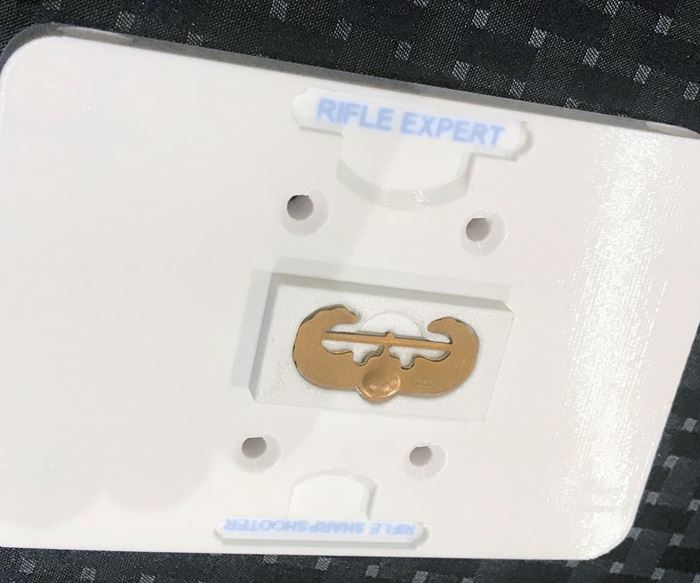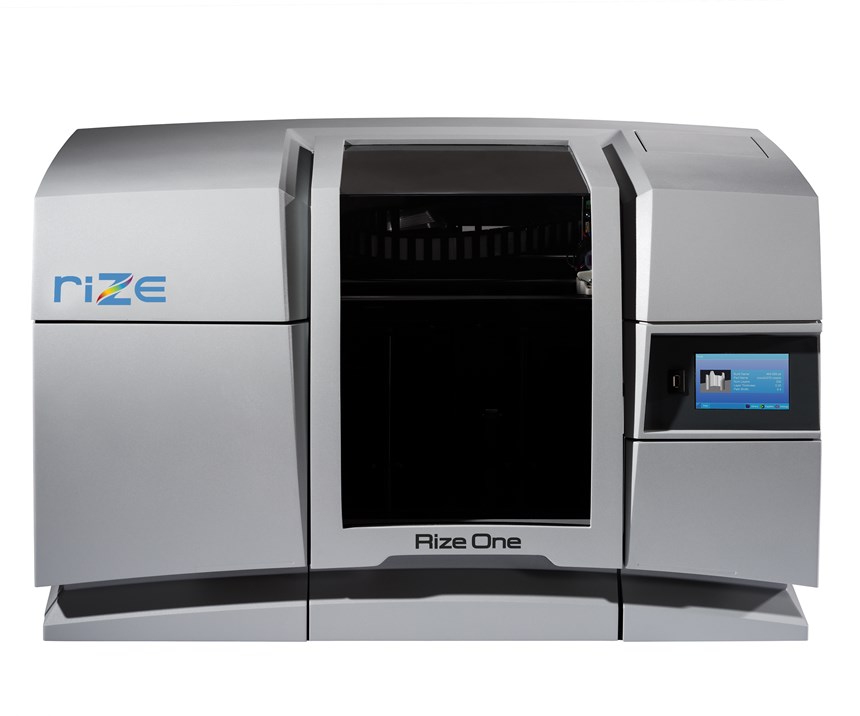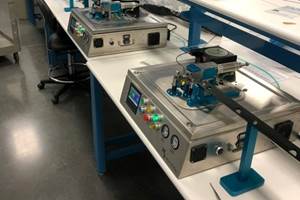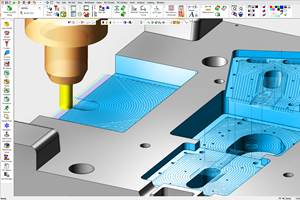With 3D Printing, Fixture Making Goes from the Tool Room to the CAD Room
For Ira Green Inc., fixture design and iteration used to take days, even weeks at times, and at a high cost per fixture. With a 3D printer, the shop’s entire process has changed, drastically increasing efficiency and cost effectiveness.
Share





Founded in 1943, Ira Green Inc. (IGI), headquartered in Providence, Rhode Island, is a full-service manufacturer and distributor of nearly 40,000 different accoutrements for military uniforms. IGI’s tool shop is focused, therefore, on manufacturing coining and blanking dies. It also produces small fixtures for welding and polishing.
With high demand for IGI products, new fixtures are required every day. However, each job had to wait in a queue for several days before it could begin, resulting in bottlenecks. Lead times between job requests and fixture delivery ranged from several days to weeks. Moreover, each fixture required eight hours of CNC programming, either for setup of pockets or contour electrodes for tool steel and wire EDM flat pockets. IGI was spending $300 for every fixture.
IGI’s manufacturing manager Bill Yehle argued that creating fixturing from 3D-printed plastic components instead of asking toolroom personnel to machine metal fixturing components would reduce the toolroom backlog while maintaining headcount. He proposed that using a 3D printer from Rize Inc. to print fixture parts would enable IGI to move that work to the fast-response CAD group instead of the overburdened toolroom.
“Implementing Rize 3D printing as part of a strategic process shift has completely transformed our production process,” Mr. Yehle says. In short, the shift has added toolroom skills to higher-skilled CAM and machine building tasks, so that fixture design can be accomplished at the time of product design, following the design/manufacturing development process along a parallel path.
From $300 per Fixture to $2
Prior to using Rize, machine operators clamped the piece down on the machine, which required considerable trial and error to get the placement right. They also tried melting the mold into nylon to hold it in place, but this also required a time-consuming process of trial and error—“turning and burning,” as Mr. Yehle calls it—and did not meet IGI’s accuracy requirements.
Precision is critical. The 3D-printed fixtures hold the piece while it is being nailed in the welder and ensure the precision and accuracy of the nail placement. This speeds the process because it eliminates the need for repeated manual adjustment of the fixtures. It also saves time from machine operators placing one nail at a time using traditional machining. Using fixtures printed with the Rize One machine, IGI has been able to standardize the center of the fixture for nailing the piece without requiring adjustment.
Since implementing 3D printing less than a year ago, IGI’s design team has printed approximately 300 fixtures. It now uses the Rize One 3D printer every day to reliably manufacture fixtures in 50 minutes at a cost of $2 per part. This enables IGI’s design team to produce seven different versions of fixtures per day that can be used for welding and polishing. Using the Rize One, IGI is able to standardize the molds and the nails, resulting in faster setup and change-over, repeatability, and increased accuracy. Mr. Yehle says the shop has realized an 80 percent time savings in setup and change-over times and has virtually eliminated errors.
Besides speed and accuracy in making fixtures, IGI’s designers have found use in the Rise One’s ink marking capability. They use it to print work order numbers, line numbers and pictures of the piece on the fixtures for identification as well as instructions for part use and storage. These markings also serve as three points of verification for machine operators to prevent errors.
When IGI has to fabricate steel fixtures to sustain heavier workpiece loads, staff still use the 3D printer for functional prototypes. The designers iterate the prototypes until they get them right and then turn to the toolroom for final steel fixture manufacturing. Previously, the shop iterated fixture designs two or three times in steel at a cost of $300 and lead times of two days per iteration. Rize enables IGI to produce seven prototypes per day at $2 each.
3D Printing on the Radar
IGI had been thinking about implementing 3D printing to improve its processes for some time before implementing the Rize One, which it chose after seeing it demonstrated at an event and in consultation with Rize and Dassault Systèmes authorized reseller Caelynx. IGI was impressed with the part strength and industrial material properties Rize was able to work with, which enable fixtures to be drilled, polished and welded without welding flash and without increasing part temperature during welding.
Equally important to IGI’s strategy of operating 3D printers in its design office is that Rize 3D printers are easy enough to use that the existing design staff could operate them. IGI’s industrial designer, who had not used a 3D printer since he was a college student, said he was able to get up and running with Rize One quickly and easily.
IGI continually develops its use of the Rize One for fabricating fixtures. The company regularly iterates its fixtures for easier removal of the molds from nail and welding machines and to further enhance the standardization and repeatability of the production process.
Some of these enhancements include printing fixtures within fixtures. In this situation, the base fixture is a standard size while the fixture insert is customized for the workpiece, threading the molds for screws and printing spacers that enable selected molds to fit securely on certain machines.
IGI is also considering using the 3D printer to manufacture service and spare parts on demand for its machinery in order to reduce the time and cost of sourcing and ordering machined parts, especially when parts are obsolete or suppliers go out of business.
Related Content
Lyndex-Nikken Collets Enable Accurate Small-Diameter Cutting
The MMC Mini-Mini collet chuck is well suited for high-speed machining applications where clearance is needed, such as die mold, aerospace and medical parts.
Read MoreFor This Machine Shop, Licensing Is the Answer to the Inventor’s Dilemma
Machine shops are natural inventors, but not necessarily suited to supporting and marketing a product. This Minnesota shop with an invention related to micromolding will share it through licensing.
Read MoreHow to Achieve Unmatched Accuracy in Very Large Workpieces
Dynamic Tool Corp. purchases two bridge-style double-column CNCs to increase the cutting envelope and maintain 5-micron cutting accuracy in the long term.
Read MoreCimatron's Updated CAD/CAM Software Streamlines Mold Design
Eastec 2023: Cimatron V16 includes a clean new user interface and increased automation for faster mold design, electrode creation and NC programming.
Read MoreRead Next
When Is 3D Printing Cost Effective?
Hype continues to surround additive manufacturing. These three factors can help determine whether a part is worth 3D printing.
Read MoreSetting Up the Building Blocks for a Digital Factory
Woodward Inc. spent over a year developing an API to connect machines to its digital factory. Caron Engineering’s MiConnect has cut most of this process while also granting the shop greater access to machine information.
Read More5 Rules of Thumb for Buying CNC Machine Tools
Use these tips to carefully plan your machine tool purchases and to avoid regretting your decision later.
Read More




















.jpg;maxWidth=300;quality=90)










